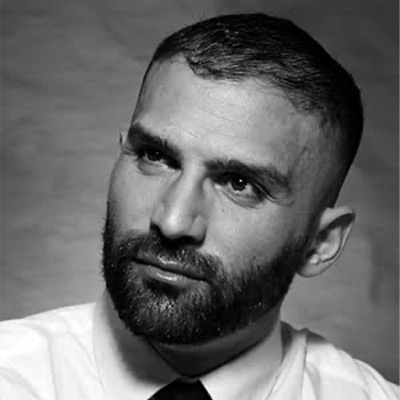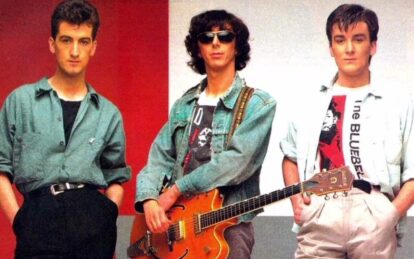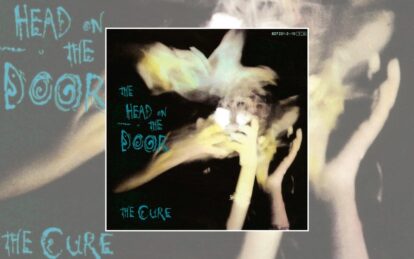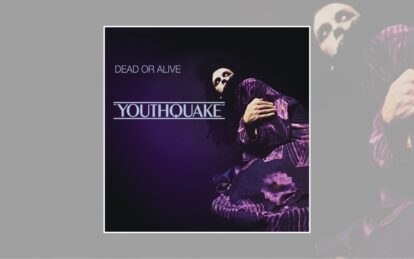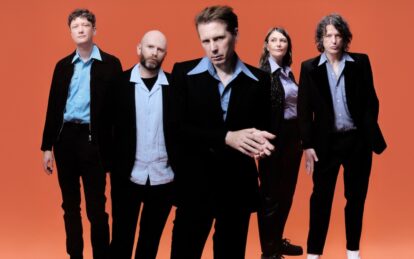Top Of The Pops transformed itself into a non-stop party showcase for the 80s pop explosion. In this article from 2018, Martyn Ware and the late Janice Long looked back…
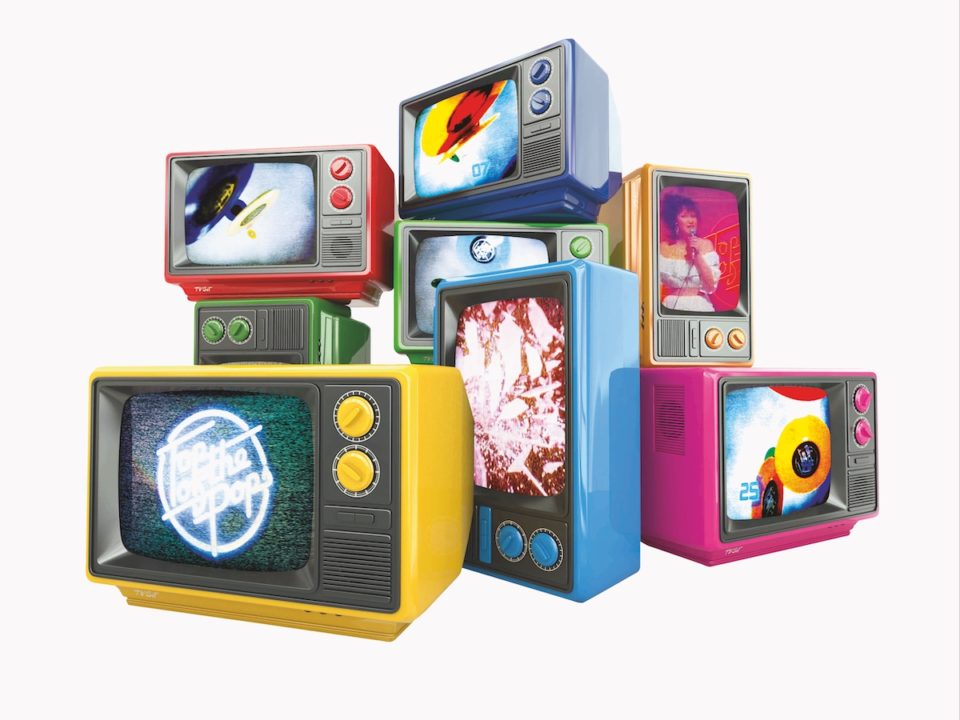
At the dawn of the 1980s, Top Of The Pops was faced with a dilemma. “It was a mechanical operation, very well run, but there was that BBC cleanliness to it that wasn’t quite right,” remembers Judd Lander, a plugger who worked with ABBA and The Jacksons on the show.
“If you got a young band like Bay City Rollers on with a young audience, then it worked, but it was full of these weird moments where the audience wasn’t responding to what was happening onstage.”
This problem became even more acute as the 70s drew to a close. The charts were brim-full of variety, from Blondie to Madness to Chic, and singles such as M’s Pop Muzik and Buggles’ Video Killed The Radio Star. In 1979, sales of 45s hit a record high.
The previous year, Smash Hits reached the magazine shelves, celebrating the chart-bound with trivia, humour and colour. The seeds of the 80s were already being sown, but Top Of The Pops was stuck in the past. This was obvious when the future shock of synth-pop collided with the BBC’s light-entertainment aesthetics; cameras languidly panning across an unmistakably 70s stage, slowly zooming in on starburst lights.
“It was a transitional time. People like Gary Numan were having hits, but when we went on the show doing Rock ’N’ Roll, there was the same sparse crowd boogalooing and being shepherded around,” recalls Martyn Ware, still then part of The Human League.
The new decade required a Top Of The Pops revamp. When Michael Hurll took over from dickie-bowed patrician Robin Nash as producer in mid-1980, it got one.
“Michael wanted to razzmatazz it up, make it sexy. He wanted it to reflect the times,” says Lander. “He was an innovator, he loved technology and would be the first to take advantage of any new gizmo.” Janice Long, soon to be the first female presenter on the show, agrees: “Michael really knew how to put something together. He understood entertainment.”
Read more: Top Human League songs
Read more: Top 40 synth-pop songs
Hurll deployed all the latest tricks, onscreen graphics and video screens and, in 1981, commissioned a new title sequence and theme. Footage of multicoloured vinyl tumbling into dry ice was reversed to appear like flying saucers hurtling towards the viewer, all cut with rapid-fire editing to the synth-heavy, stuttering wallop of Midge Ure’s theme (a reworking of his Phil Lynott collaboration Yellow Pearl, bolstered by timely Burundi-style toms).
The sequence came to an explosive climax of shattering neon-pink vinyl. A new Top Of The Pops logo was cut out of reflective steel. Everything was shiny and new, and very, very 80s.
This sense of perpetual motion continued within the show itself. In came sweeping cranes surveying the action and hand-held cameras getting up close to the stars. The latter development proved particularly useful when an act such as Toyah, Cyndi Lauper or Frankie’s Holly Johnson decided to saunter offstage and interact with the crowd, a breaking of the fourth wall that was unimaginable in the static performances of just a few years before.
Stage sets were increasingly inventive, like the giant Chaplinesque cogs adorning The Stranglers’ Strange Little Girl stage set in 1982. Sci-fi-like steel contraptions gave the show an industrial, modern gleam. Madness even got a sit-com style living room installed for ’82’s Our House. “Everybody on the show worked so hard, they had so much love for it,” points out Long.
TOTP was now rebooted with a frantic party atmosphere, created, as Hurll told the BBC years later, “to make the viewer at home feel more included”. Props galore flooded the show; balloons, glitterballs, and streamers. To make the experience even more immersive, the now-supersized audience would frequently encircle the acts featured on the stage and appear above them on newly constructed gantries.
Crowds on Top Of The Pops in recent years had seemed like rabbits caught in the headlights, staring at the cameras, waving to mum and dad watching at home – a far cry from the Swinging 60s Carnaby Street kids or the platform-booted longhairs of the glam-rock era.
Read more: Alison Moyet – album by album
Read more: Gary Numan interview
Hurll – who for all his forward-thinking, ran the show like a stern schoolmaster – now whipped the audience into a frenzy, demanding that either they dance, cheer and wave with all the gusto they could muster, or go home.
Those “beaming fans with their golden tickets to TOTP”, as Long calls them, also now had fierce competition in the audience.
Hurll placed cheerleaders, professional dancers and trapeze artists alongside the young spectators. Playboy Bunny-style models and scantily clad bodybuilders were thrown into the pick-and-mix pop jamboree, threatening to upstage not just the kids, but also the main chart attractions.
TOTP in this new era seemed like a Beeb-sanitised recreation of a nightclub experience; be it the New Romantic Blitz, the ‘three ring circus’ hedonism of Studio 54, or the strobe-lit ecstasy of a gay club (see Hazell Dean’s Searchin’). The 80s were all about excess, and TOTP delivered the goods, including fire-eaters and a merry-go-round.
If TOTP’s audience was no place for camera-shy wallflowers anymore, neither were the charts. Pop music was booming and everyone making it seemed to have a shrewd sense of ‘the look’ – how to project an image.
Whether it be girls- and boys-next-door given a glamorous makeover (eg, Kim Wilde, Dollar or Bucks Fizz), panto-popstars such as Adam And The Ants and Madness, or bands like ABC, Duran Duran and Culture Club, who, in Martyn Fry’s words, “all wanted to be their own movie”.
The charts provided Top Of The Pops with raw material totally in sync with their glossy reinvention. Previously, bands like the Clash had snubbed the show, saying it lacked credibility. But the new breed of pop stars were a televisual dream come true.
“You’d get people like Boy George who’d say: ‘I want to be a peacock. I want to show off,’” says Lander, who went from plugger to popster when he played harmonica on Culture Club’s 1983 mega-hit and got himself on the show with the band.
Martyn Ware echoes this emphasis on ambition and style on returning to the show with Heaven 17 to perform hits such as Play To Win and Temptation: “We were going for the jugular and we knew exactly what to do. We knew that fashion was important.”
Many of the current pop crop had been raised on the out-there glamour of Bowie and galvanised by the DIY ethos of punk. This juxtaposition gave British pop of the period its peculiar character: caught between the fantastical and the real, both dazzling and relatable in equal parts to Top Of The Pops viewers at home. It made everything, as Janice Long notes, “individual”.
Such uniqueness was often borne out of economic necessity. Long herself remembers buying clothes from Army & Navy and cutting them into new designs. Toto Coelo wore punk-style bin-liner attire, though it came in poppy Day-Glo colours. When they performed I Eat Cannibals on TOTP, presenter John Peel couldn’t resist putting on a bin bag, too.
For kids watching, it meant you’d get a new, easy-to-emulate dressing-up tip. “I’m a young kid watching the show and suddenly this cool artist comes up with an eye patch or a little facial make-up mark,” says Lander. “I’m young and I go in to school and say to my mates: ‘I’m cool’ by having an eyepatch or make-up mark on.
“It had that effect, from the band to the crowd to the fans at home and on the high street. It was also a fashion programme. It dictated fashion, as well as music. When I was on the show with Culture Club coming and going from the BBC, you’d see all the little Boy Georges.”
Kaleidoscopic variety defined the new Top Of The Pops. Floppy-haired, eyeliner-wearing poseurs rubbed shoulders with performers who resembled the actual crowd, often within the same band. This was the case in Ware’s former group, the new hit-making Human League, who’d recruited two schoolgirls from the dancefloors of Sheffield. They could have easily been plucked from the audience of Hurll’s new TOTP.
Sometimes, future pop stars would be in that crowd, bopping to The Jets like a pre-fame Boy George, or later on, a cheerleader who crossed over to be a chart act like Sinitta.
Boy/girl, black/white dance troupe Zoo, whose performances of songs such as Gary Byrd’s The Crown in ’83, made it clear how zeitgeist-savvy the show now was – it was a world away from the incongruity of watching Legs & Co. boogie to the Pistols’ Pretty Vacant.
Hurll’s overhaul brought with it new presenters. John Peel returned after a 14-year absence in 1982, followed the next year by Janice Long, often his sidekick after the departure of his former foil Kid Jensen. Peel served dry wit, mocking the artists and breaking the ‘Smashie And Nicey’ mould former presenters seemed uniformly cast from.
“Some of the DJs on the show were cool and funky like Peter Powell. Then you’d get others who would be like weather readers. But Peel and Janice were so good, so passionate about music and funny,” says Lander. So funny, in fact, their irreverent style often drew the ire of the public.
Surprisingly, the complaints didn’t faze the authoritarian Hurll, who, according to Long, encouraged it. “Michael loved controversy. He knew it would push up the ratings,” Lander adds.
Reality occasionally seeped in to the TOTP party thanks to a hard-hitting protest singer such as Billy Bragg. Like Thatcher’s 80s itself, divided between glitz and squalor, the TOTP experience had, as Holly Johnson told the BBC, two very different sides to it. Backstage was a sharp contrast to the razzle dazzle Hurll cultivated in the studio.
Away from the bright stagelights were the endless corridors and drab rooms of BBC TV Centre. Catch a star back there, and the bubble of pop mystique could be burst forever. The spectacle of seeing The Weather Girls eating KFC and Chrissie Hynde having a sandwich were just two such moments for Janice Long.
Read more: Top 40 Vince Clarke songs
Read more: Yazoo interview
The presenters’ free rein with banter was echoed, Long says, by total wardrobe freedom. Clad in big frocks and outsized earrings, Long would be faced with the Olympian task of running through the assault course-style set.
Presenters and audience alike were constantly revved up. “I remember being told to make the countdown more lively. I felt like I’d had too many blue Smarties!” recalls Long.
Top Of The Pops, beamed into homes at 7.30pm on a Thursday night, was, in Judd Lander’s words, “a shared visual experience for all the family. The charts meant that the show was a mish-mash, a menu where you didn’t know what you were going to get for dinner.
“It had these highs and lows, you know, it’d be: ‘Oh, that’s great, oh that’s naff’. Your dad would see Boy George and be horrified, saying: ‘That’s not a fella!’ Then his daughter would go: ‘Oh dad, everybody’s dressing like that, you’re so uncool!’ It had the ability to smuggle the subversive into the suburban living room as light entertainment.”
In the past, Bowie draping his arm suggestively around Mick Ronson during Starman, or The Sweet camping it up in German uniforms, had given Top Of The Pops the whiff of controversy. Hurll’s revamp did likewise, via ‘gender benders’ such as Boy George, or out-and-proud acts like Bronski Beat.
The show even became a heated familial talking point for the presenters. Watching the show at home, Long remembers her mother turning to her after the Echo & The Bunnymen were on and saying: ‘I hope you aren’t hanging out with them. They’re either drinking too much or on drugs!’
Parents may have disapproved, but their kids were being exposed to sophisticated music along with the novel and the naff. A pre-teen might be tuning in to see Bucks Fizz, but they’d also encounter an alternative act who’d crash-landed in the charts: The Banshees, The Cure, Japan or The Smiths.
This was the same kind of ‘mish mash’ youngsters experienced on the early Now!… compilations, giving an entire generation eclectic tastes before they’d even hit double figures.
It was the pan-generational appeal of TOTP that covered all bases. Sneaking indiscretions through the back door if you were Frankie, pulling out toy guns on a live transmission of Top Of The Pops, was always a bit more thrilling to watch with the family than any outrage, say, Rik Mayall puking, seen solitarily on The Tube.
TOTP was, in Martyn Ware’s words, “the gold medal, the seal of approval that you were a pop star, even if you were only on it once”.
The trouble was, by the late 80s, the charts upon which the show’s format relied were becoming bereft of character and colour.
“Music was becoming quite grey,” says Neal X who, as part of Sigue Sigue Sputnik, added a rare flash of outrage to the show in the second half of the 80s. Hurll left the show in 1987 and subsequent producers struggled to compete with the dry ice and neon party he’d thrown during his tenure. Perhaps it was foolish to try.
As self-styled pop stars such as Dexys, Adam Ant or Culture Club faded from view, record companies seized control, predicting tastes rather than taking risks on dashing weirdoes.
They were replaced by squeaky clean SAW acts, manufactured boy bands or mature power balladeers. “The stylists took over. A blandness prevailed,” notes Long.
Dance music’s faceless one-offs didn’t help, either. The lack of telegenic pop posed a huge problem for TOTP’s future. Those who were left were mostly overseas and Prince, Michael Jackson and Madonna were just sending their now-lavish videos in at this point. “It was a long day,” Lander says. “It took a huge chunk out an artist’s promotional schedule, all that hanging around.”
The bland assault on pop made it hard for Top Of The Pops to recapture that Hurll magic. TOTP’s ‘golden moment’ is now gone, zapped by streaming and downloads. Chart rundowns and that shared visual experience after tea on a Thursday night have disappeared. With them went that ‘mish mash’ of Joe Dolce, Duran Duran and The Cult.
Ware says modern pop, with its talent-show contestants aping what is already popular, rather than delivering the ‘shock of the new’, suffers from “a denial in the power of fantasy”.
That power was always what made Top Of The Pops so vivid in those few years of the 80’s. Enduringly so, as Janice Long says: “All I remember about that period is colour. When I see re-runs and hear the ‘boom derder’ of the title music, my stomach still flips with excitement.”
Pick Of The Pops
A rundown of weird and wonderful Top Of The Pops moments
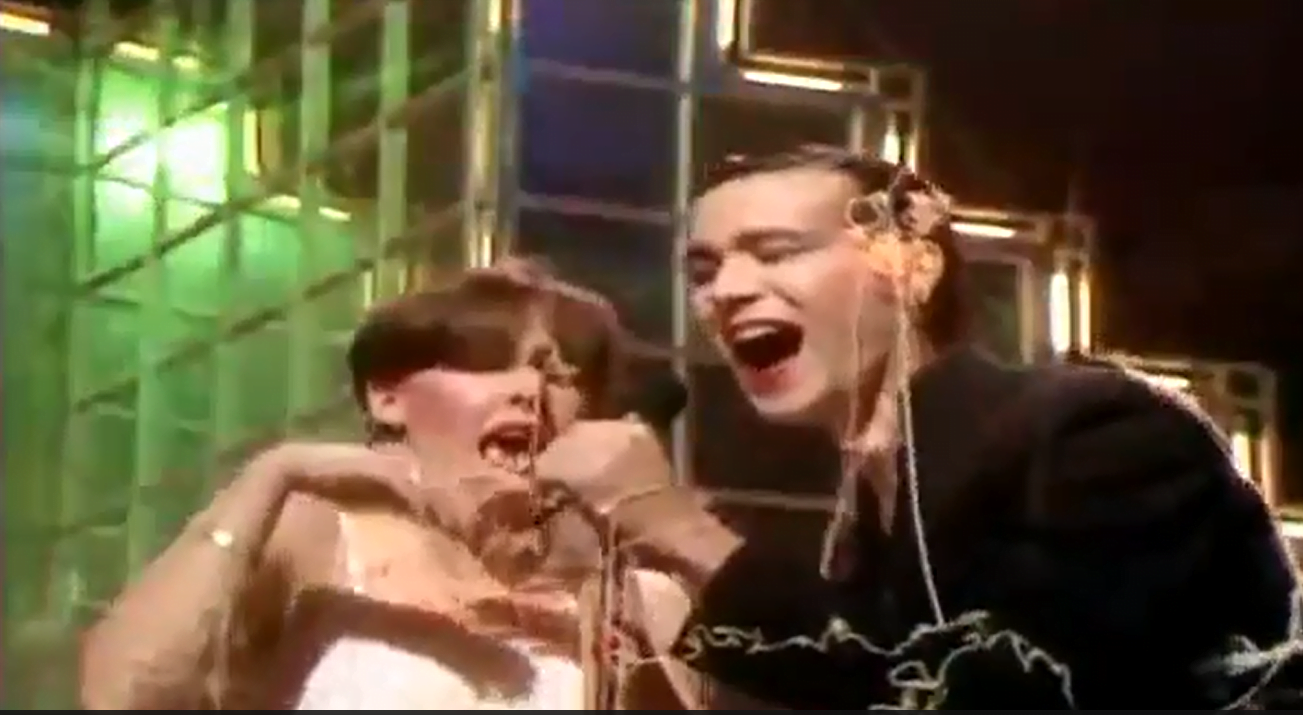
Oakey’s New Romantic Bela Lugosi meets festive cheer on this chart-topping 1981 performance, with flashes of Santa red from Susan Ann Sulley’s dress and Jo Callis’ jumpsuit: elegant Art Deco-style staging, too. Slightly less elegant, though, is the crazy string fired from the audience by prankster (and Dare producer) Martin Rushent.
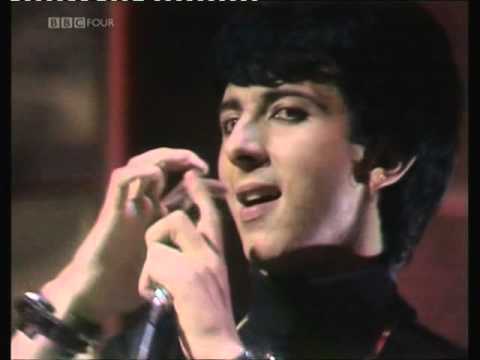
Few synth duos were more telegenic than Soft Cell: the most striking since Sparks. In this 1981 appearance, a black-clad Almond, all wild gestures and fierce painted eye contact, sends shockwaves through the nation’s living rooms. Our love affair with the twosome started here.
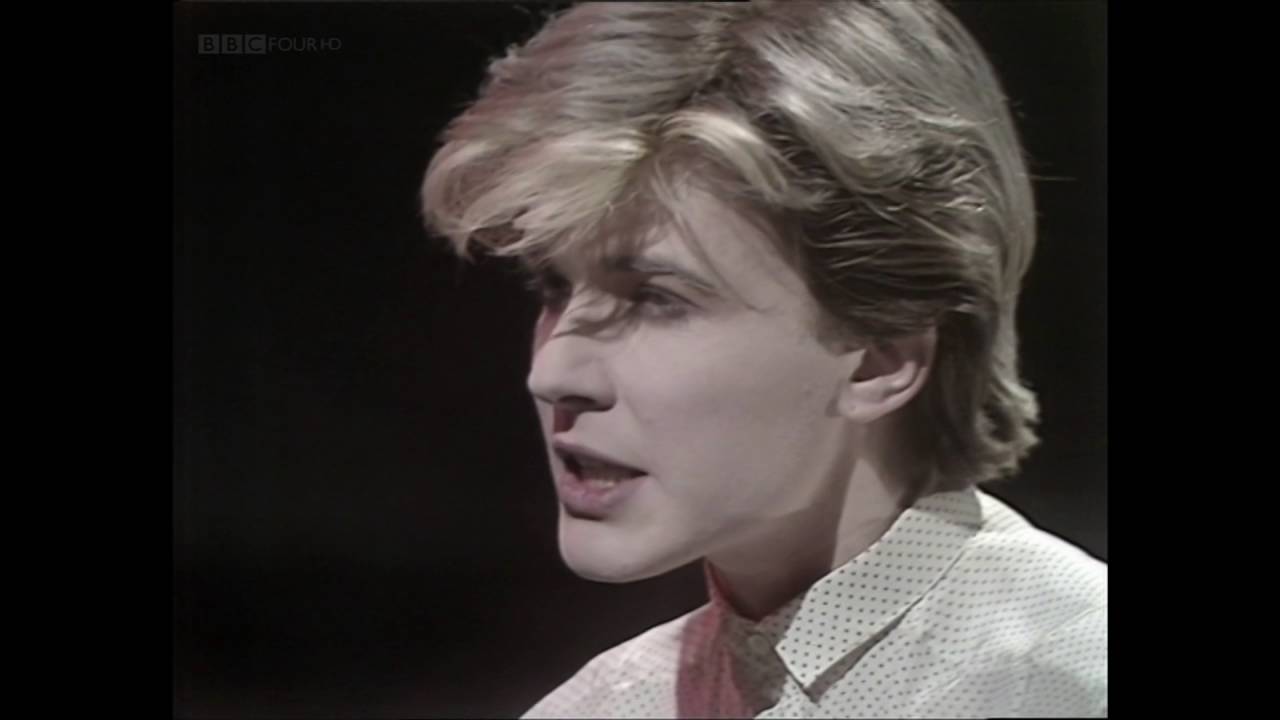
The 70s had those strange moments when audience and act didn’t quite gel. Similar moments in the 80s were often an odd, arty thrill. Japan’s spooky, beatless Ghosts from 1982 reduces the crowd to an eerie silence, as dry ice wafts across the stage. For more atmospheric party-stoppers, see Clannad’s Harry’s Game.
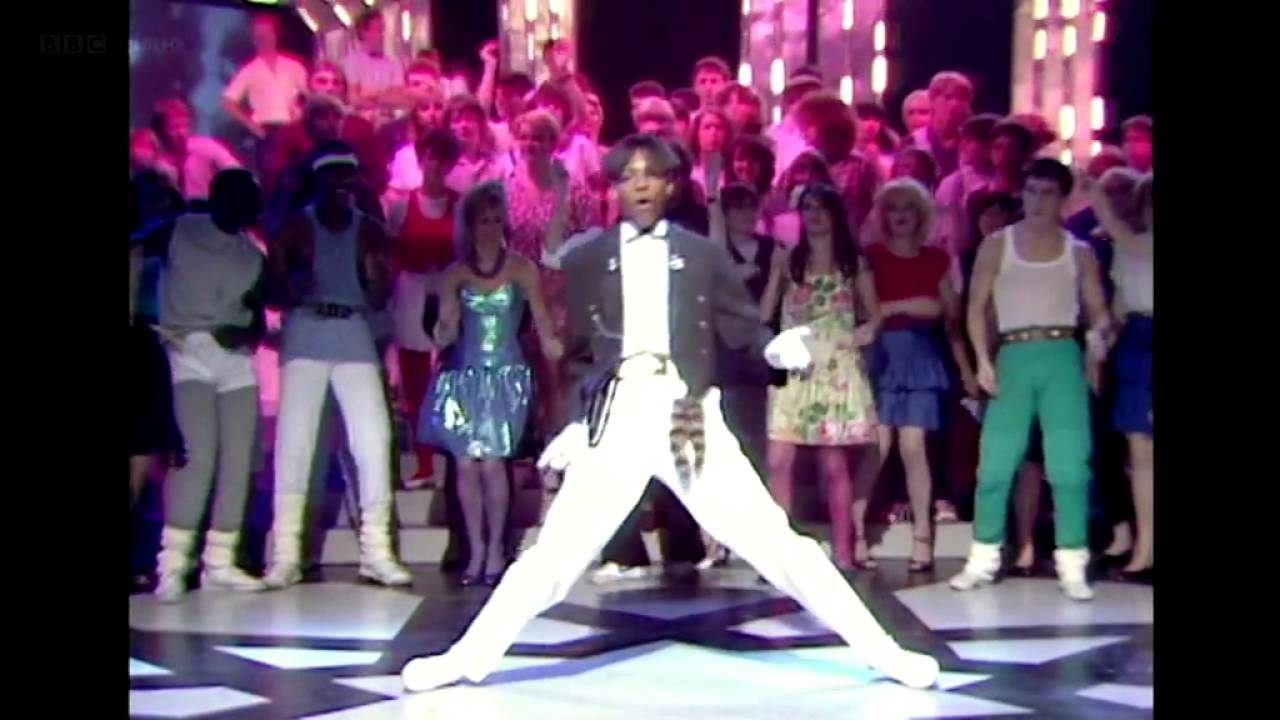
In 1982, singer Jody Watley was pregnant, so Jeffrey Daniel, alone, presents a combination of mime and street-dance, featuring the never before seen backslide, a precursor to Jacko’s moonwalk. The result? After popular demand, an invitation back. Read our interview with Jeffrey here.
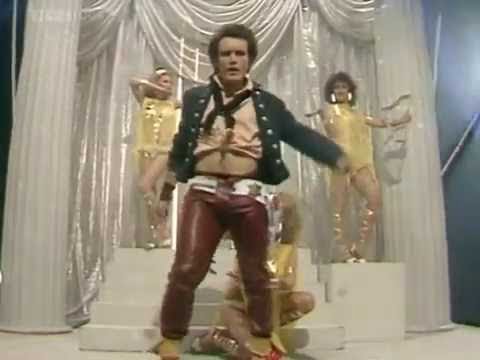
The apex of TOTP’s staging. Ant, in imperial pomp, takes over the studio for this 1982 spectacle, swaggering from stage to stage, through Ancient Greece to Dick Whittington’s London. If TOTP couldn’t beat the video boom, then it would simply create one on the show. Nifty choreography, too.
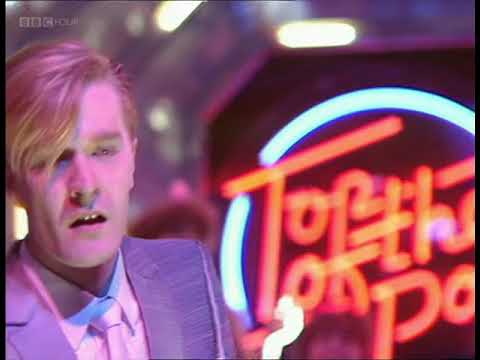
A mohair-suited Martin Fry’s eyes lock with the cameras in hot pursuit; pure pop ambition in one televisual embrace. Fellow band members provide choreographed back-up, harking back to Smokey and The Miracles. The foppish flick of Fry’s floppy fringe adds a very English flourish to this sophisticated masterpiece from ’82.
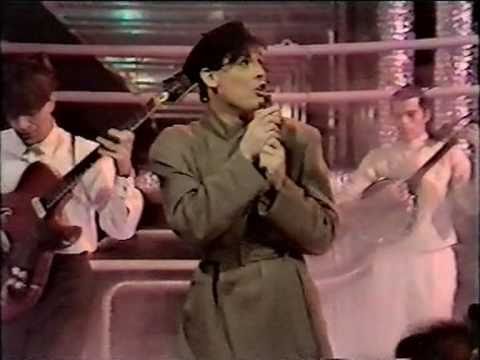
It’s 1982 and to quote Fun Boy Three, the lunatics are taking over the asylum. The charts were full of visionary weirdos like The Associates, featuring multi-instrumentalist Rankine and ‘Sinatra on hot coals’ Billy Mackenzie. “The voice of an angel, the look of a film star”, says Martyn Ware. New Pop Heaven.
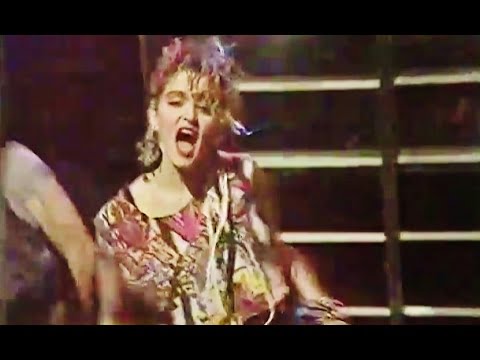
Everybody remembers her cavorting solo, in a pink wig, for Like A Virgin later that year, but January ‘84’s loping, muscular performance of Holiday was TOTP’s best showcase of her bid to “conquer the world”. Backed by two dancers, including brother Christopher, it’s clear here that it was only a matter of time before the mission was accomplished.
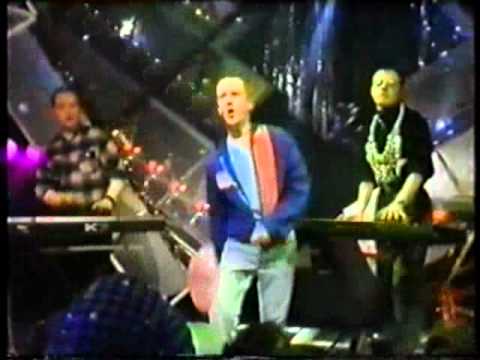
This hi-energy cri de coeur, sung live, was “the first overtly gay piece of propaganda on TOTP”, according to London Records’ Colin Bell. More of the same, albeit more rambunctious in nature, came with Frankie’s gun-toting, tabloid-ripping appearances that same year. More ’84 politics amid the balloons and streamers came with The Special AKA’s Nelson Mandela.
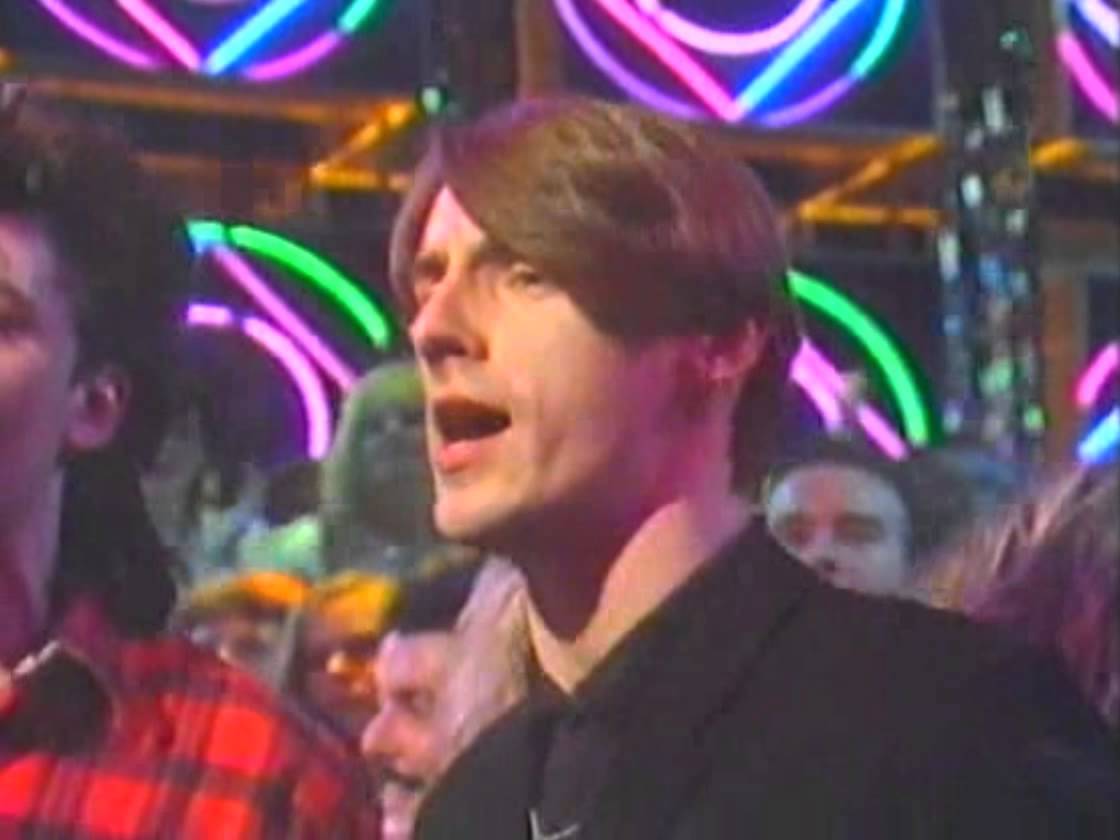
Every top-shelf pop mullet gathered under one roof for this warm-hearted runthrough of the charity single. Save for Bono, of course, who had Paul Weller mime for him. “Everybody was very good-natured,” recalls Duran Duran’s Nick Rhodes. The Quo, toe-trampled and nudged by Bananarama, remember otherwise.
Classic Pop may earn commission from the links on this page, but we only feature products we think you will enjoy.

